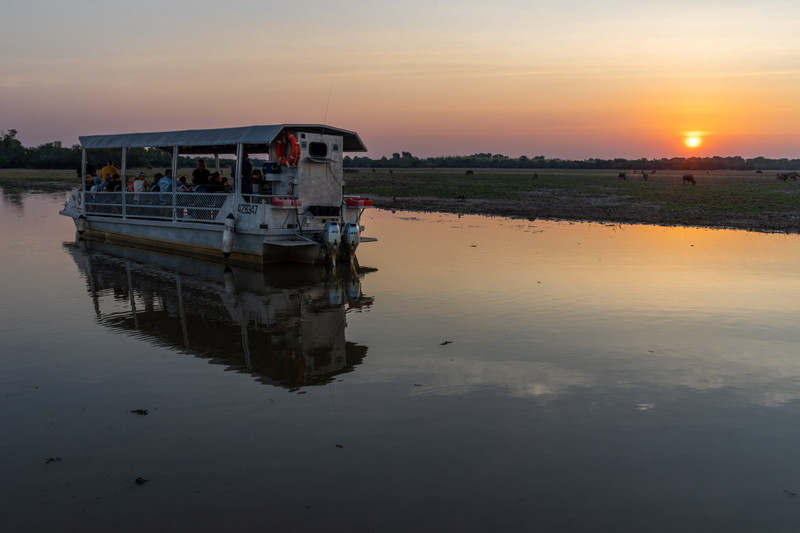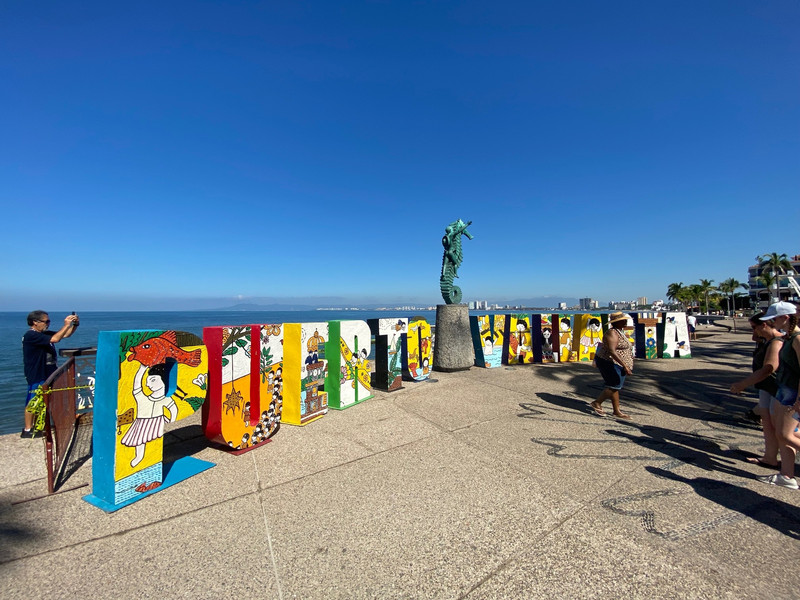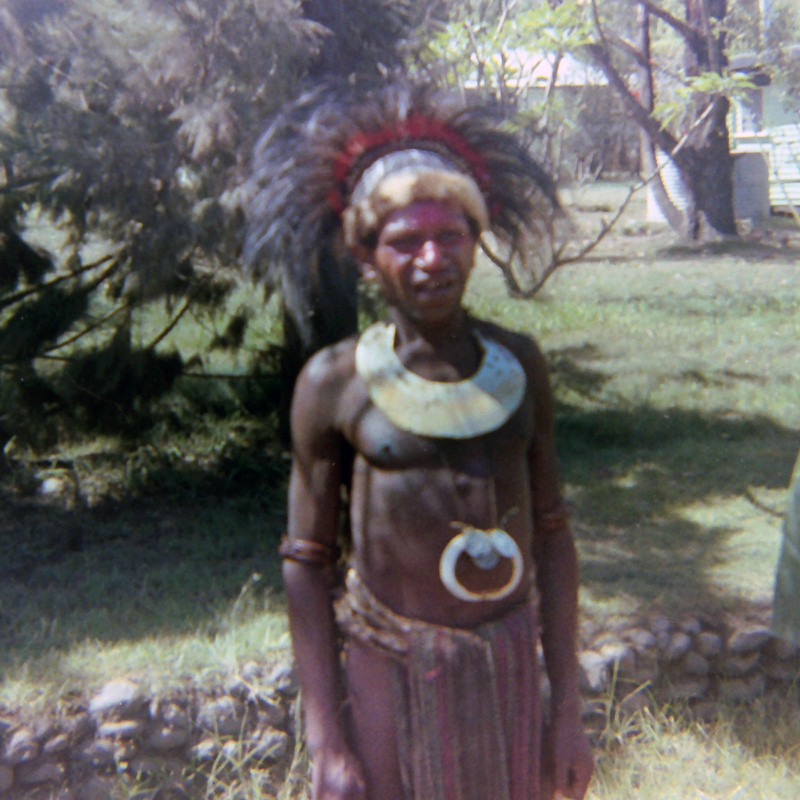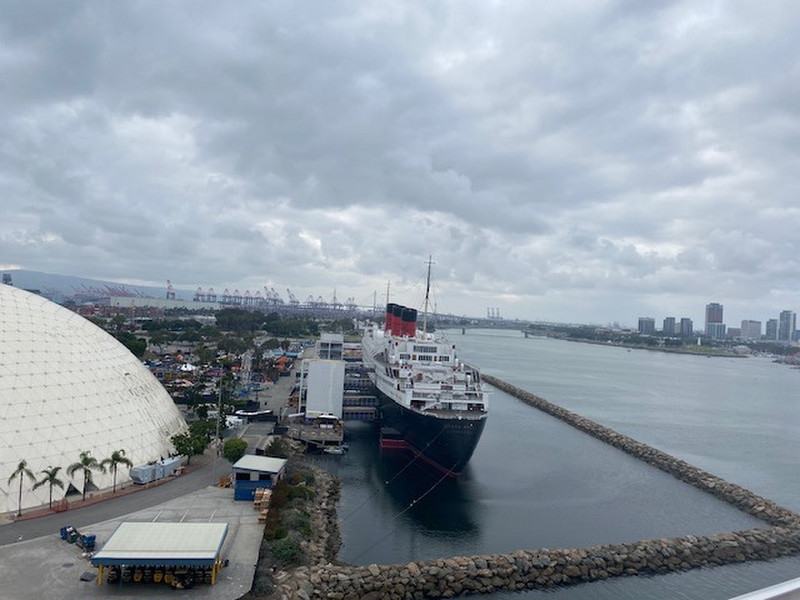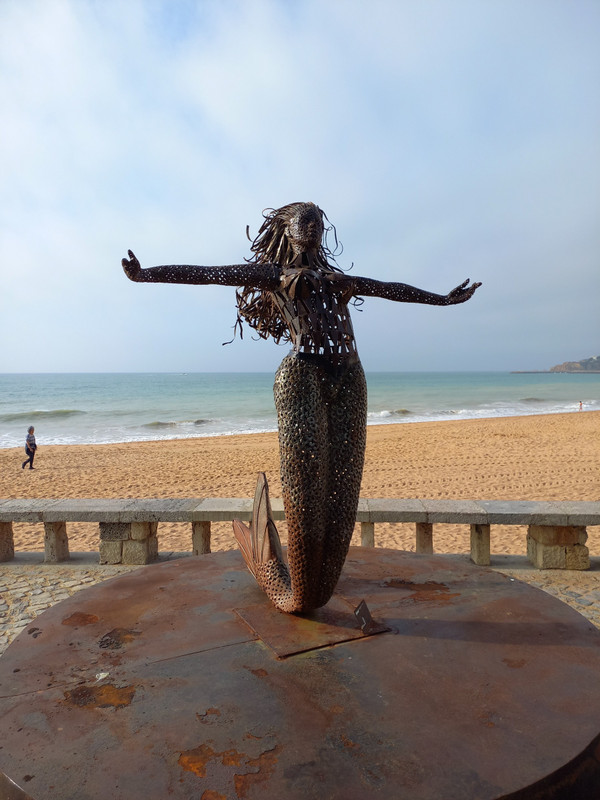Im woken at the crack of dawn by noise that would wake the dead - thousands of birds in chorus in the trees around the hotel. I wonder how Issy can possibly still be asleep. I check to make sure that she is actually still with us, but all good - the snoring was a bit of a giveaway. I decide to take the opportunity for an early morning trip out to the Mamukala Wetlands. On the off chance that Issy stirs before I get back I leave her a note to tell her where Ive gone. At least now if I get taken by a croc, shell know where to tell the searchers to look. I arrive at the car park to find that Im the only person here. I read a large crocodile warning sign, and then a few metres further on another one, put there presumably on the off chance that I might have missed the first one. Im feeling a bit lonely. I wonder what Ill do if I across a croc and it starts chasing me. I dont think I could outrun it. I suppose I could climb a tree, but if what we
saw of the Jumping Crocs out on the Adelaide River a few days ago was anything to go by I dont think any of the trees here are high enough to be of much help. Im starting to wish that there was at least one other person here, although Im not sure what good that might do. I suppose they could at least help the coroner fill in his report.
First stop is a bird hide on a walkway over the edge of the main wetland, which is massive and looks spectacular in the early morning light. Theres no shortage of bird life and colourful water lilies on display. I hike along a track through the bush between this wetland and the next one. There must be thousands of birds here, as well as more than the odd wallaby.
I head back and take a quick tour of Jabiru Township. All the houses look the same, which seems consistent with its origins as a closed town for workers at the nearby Ranger Uranium Mine. Mining started here in 1980 and only stopped earlier this year. We saw some signs at a ranger station when we first crossed into
the Park yesterday warning us to keep well clear of any of the uranium mines. Environmental standards werent as high in the 1980s as they are now, and its a wonder the whole place doesnt glow in the dark.
Issys stirred so we head back to Nourlangie Rock where I went last night. It doesnt look quite as stunning in the midday sun, but the indigenous rock art is a bit easier to see. We stop briefly at the nearby Anbangbang Billabong, and then attempt to climb up to the Nawurlandja Lookout which overlooks it. The path leads onto a massive sloping rock face. Issy doesnt get too far before deciding to head back but I can never resist a challenge so I press on. This proves to be a poor decision. I twist my ankle. I limp on. At least the views across to Nourlangie Rock are spectacular, albeit somewhat hazy. I limp back and report my injury to my beloved. She looks a bit sheepish. She says she wasnt going to tell me, but seeing as Ive confessed she says that she will too. She says she fell over as well, and she has the scars to
As we drive back we cant help but notice that they seem to go in for really long names out here. Gunwarrdehwarrde Lookout, Malabanjbanjdnu Camp and Ngurrungurrudjba Billabong, to name a few. Im not sure youd be all that happy if you got one of those in a spelling bee.
We head off to Cooinda where weve booked a sunset tour of the Yellow Water Billabong. It seems to be very popular - four large boatloads popular. The Billabong is a series of massive interconnected wetlands which form part of the floodplain of the South Alligator River. The bird life is spectacular, and were told that a high proportion of the countrys avian species are represented here. ... and theres a herd of wild horses hidden in amongst the trees, and of course there are crocs; lots of crocs. As seems to be the case everywhere our guides have names for all of them. Van Gogh has had half of one of his ears chewed off by a rival.
